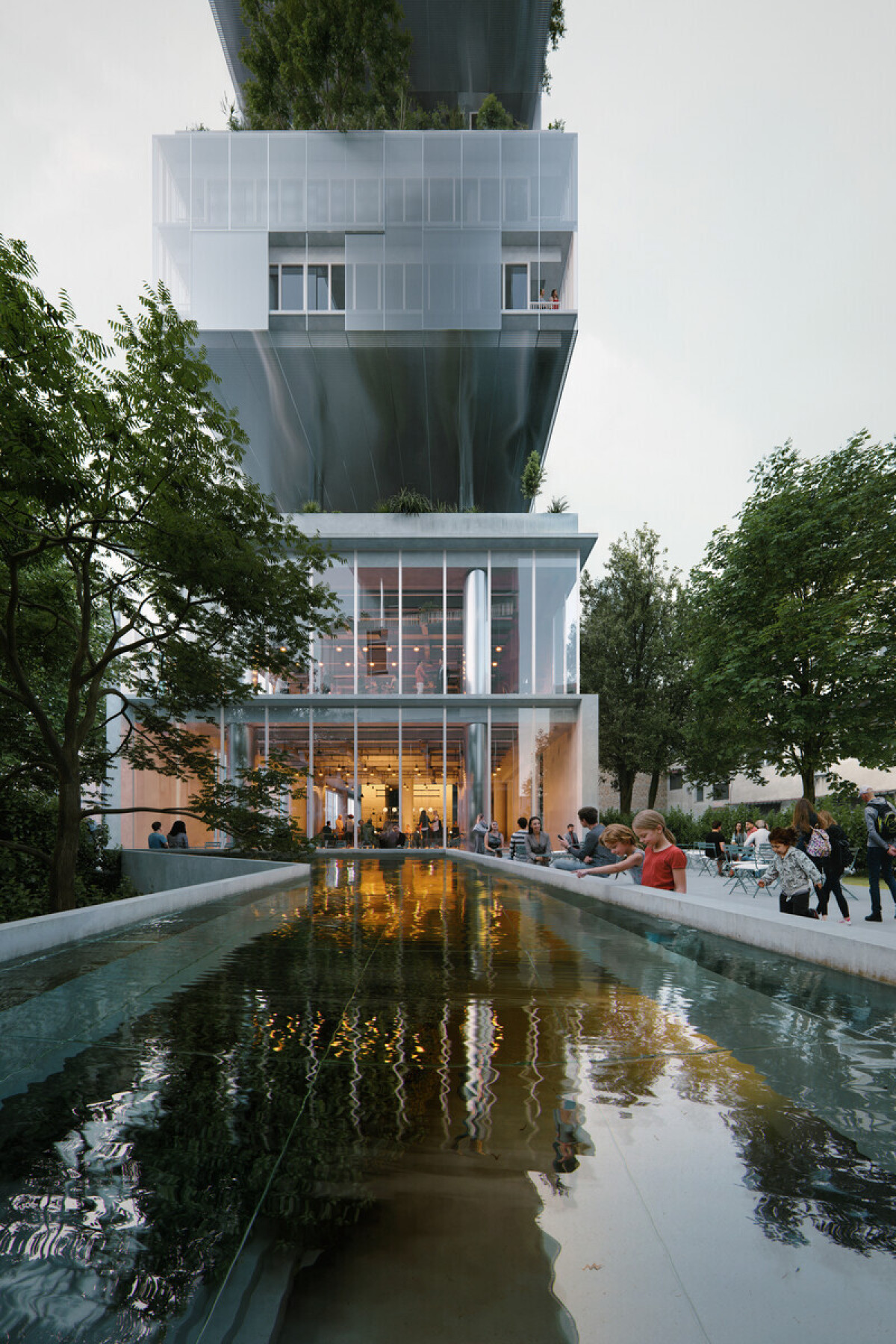14 Nov 2024

Located on Myslym Street in a central district of Tirana, where old and new converge, the Ndarja building—designed for residential, hospitality, offices, and commercial use—adapts to the ongoing transformation of the urban morphology landscape. Surrounded by lush vegetation and illuminated by a reflective water surface, this space softens the structure’s solidity, allowing the architecture to breathe.
Two similar, fragmented volumes are aligned on their narrowest sides, creating a void that invites visitors into a square—a sanctuary for gathering where people can disconnect from the city’s relentless pace.
The “break” in the structure’s volumes, achieved through a rotational design, redefines the urban space and promotes a fluid connection between the street and the building. A transparent water mirror serves as a portal at its core, drawing natural light underground and linking the exterior to the interior. This open area integrates the greenery from the surrounding streets, the square, and the balcony gardens, creating a pleasant microclimate for the neighbourhood. The square, no longer just a passageway, becomes a true urban oasis.
The ground and first floors host commercial spaces that benefit from the proximity and visibility of the street, while the upper floors accommodate a mixed-use program. The volume facing Myslym Street offers a variety of apartment types and a premium hotel on the upper levels, taking full advantage of the breathtaking city views. The volume on Pitarka Street is also dedicated to apartments, with added office spaces, and features separate lobbies for each function. The façade, with its earthy tone palette, blends the building into the city’s visual continuity.
Brises-soleil and perforated metal sheets regulate light and provide privacy for the occupants, while reflecting the activity on the balconies back into the city, mirroring the urban environment within. The vegetation was thoughtfully selected for its placement within the building, with species chosen for their resilience to wind and sunlight. This ensures the creation of healthy green spaces, fostering a harmonious integration of nature into the urban environment.
Technical sheet